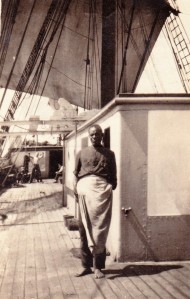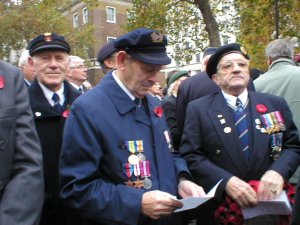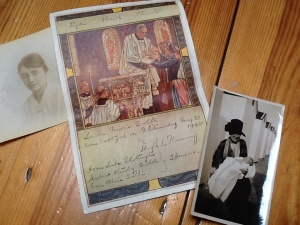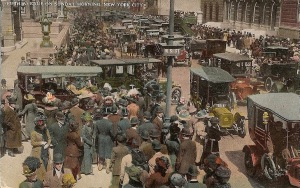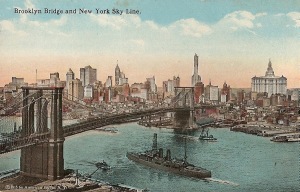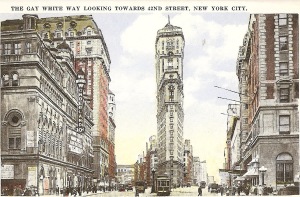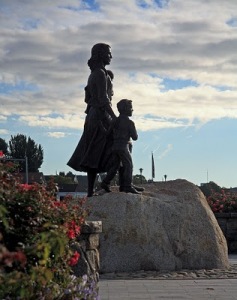Archive for the ‘Seafarers’ wives’ Category
A sailor’s life – 67. Cabined, cribbed, confined
Ena Sivell didn’t have the vote when she married her sailor sweetheart in 1922 aged 26. She didn’t have a home or signing powers on her husband’s bank account, and when she gave birth to their first child 3,000 miles away from her husband in a nursing home in Ryde, Isle of Wight, three years later he did not meet the baby until it was learning to walk.
Anglo-Saxon Petroleum (Shell) – having permitted the young first officer in charge of its New York depot ship Pyrula to keep his bride aboard ship with him for two glorious years – had ordered Ena off at the first sign of pregnancy and she took her bump and her souvenir Broadway programmes and went back to the town where she was born, to make a temporary life in rented rooms, dependent on her father-in-law for paying her bills until her husband came home, which tried her sorely.
But Bert stayed on. And on.
Tradesmen’s families like Bert’s and Ena’s did not have telephones, and communication between husband and wife was by letter – two weeks out, and two back by the great transatlantic liners that swept to and fro between Hamburg, Southampton and New York in the days before air travel.
The baby was born in March, too weeks overdue. Ena – flat on her back in bed with her knees tied together, in the approved treatment of her day for a torn perineum – sent off a telegram to the States.
Bert was hugely relieved and rang all their American friends at their places of business from the ship’s phone line, fixing himself up with dinner and a trip to the Hippodrome with Ena’s chum Florence in the process.
His first letter reached her two weeks later. “I’m really a little disappointed that a girl has come along,” he wrote, with jaw-dropping insensitivity. “I would have liked a boy. But as Mrs Franke Snr told me Monday – I cannot change it now!! Mrs Mercer says I must try again …!!”
And he was no better at reassurance for his stretched little wife’s sagging self-esteem. Dismissing the rupture in his next letter with all the carelessness of a man who has never tried to pass a watermelon, (“Never mind, you’ll soon be alright again”), he added: “I cannot quite agree with the doctor that you are decidedly on the small side, my dear, although if he says so we ought to be glad you are no bigger.” Nearly 90 years later I still want to hit him.
Bert Sivell was a conservative, with a big and little C. An only child who had run away from home aged 15, he had grown up at sea, far from “decent girls,” as he put it, except for the Mission families in Australia, and the master’s daughter, Jeanie Donaldson, who made one trip with Monkbarns as stewardess in 1917. He didn’t approve of women shingling their hair, or wearing trousers.
His was a man’s world. A month after his daughter’s birth his letter home was full of the five new oil tankers that Furness Withy had ordered from German shipyards. They had offered British firms substantially more to take the work, he reports. “But owing to the labour conditions, the British firms could not take the offer. I am rather surprised that the ASP have placed orders for four new tankers* with British firms, because they are paying through the nose for them,” he wrote.
“By the way, dear, you have still not told me yet what the baby’s name is going to be…”
If the baby had been a boy Ena had suggested John Thomas, which Bert had vetoed by return of post. It was slang for penis, familiar to readers of DH Lawrence’s novel Lady Chatterley’s Lover, the third of three versions of a story that Lawrence would publish three years later in 1928, although it was 35 years before it could be openly sold in the UK. “The name John Thomas is unsuitable,” wrote Bert, “although you should not know what it means.”
When he finally got home in November, he carried in his trunk a well thumbed copy of Dr Alice Bunker Stockham‘s pioneering sex guide Karezza, recommended by a chum and bought at Wanamaker’s wonderful bookstore in New York. He had read it cover to cover.
They had also acquired Dr Marie Stopes equally controversial Married Love, which he had persuaded a reluctant Ena to have sent to the house in a plain brown wrapper.
“When I get home again we are going to be as happy as happy can be, aren’t we, darling?” he had written. “Especially with this new information I have gathered. We were going at things in a wasteful sort of way before…”
Read on: The seamen’s strike 1925
Previously: Clam, a moment in history
*[These would be the 10,000 DWT Bullmouth, Bulysses, Patella and Pecten; another six orders went to Dutch yards]
A sailor’s life – 63. To have and to hold, Pyrula 1922
The visiting tanker captains had egged him on: “Get married,” they said. “Grab the chance while you can.”
Bert Sivell, writing from the master’s quarters of his first “command” – a redundant passenger steamer serving out her days as an oil depot ship off New York in 1922 – took the plunge. “Come out and marry me,” he urged his love, far away in the UK.
The American master of the oil tanker Pearl Shell was the envy of all the Shell masters that winter. He had his wife in Philadelphia, an hour and a bit away by train from the ship, and he trotted off home every night.
“He told me I was a fool for not having you over here months ago,” Bert wrote. “He had not seen his home for two years before he came here, and had not seen his wife for eight months, although she had gone over to ‘Frisco and elsewhere in the States whenever he came to US ports.”
“Come out and marry me,” he urged. “Gossips in Ryde will be busy about conventions and rubbish, but don’t let that worry you. Trust me.”
So the little milliner from Ryde boldly left the town where she was born and caught the White Star liner Homeric from Southampton in December 1922, carrying in her trunk the homemade trousseau she’d been stitching for three years. Her young man gave her £60 of his savings – which was more than she earned in a year – and for half of it she shared a windowless cabin in second class with a girl called Florence Ayers. (No point paying for a port hole, Bert had said knowledgeably; at that time of year the crossing would be too rough to open it anyway…) Florence and Ena were to remain friends for the rest of their lives.
She’d thought it was wishful thinking when Bert first raised the idea in February, in a throwaway line about needing a secretary for all the paperwork the Asiatic Petroleum office was throwing at him.
She had expressed pity that he was darning his own socks. “You had better come over right away, my dear,” he wrote. “I have a whole pile of mending of all sorts, even my jacket is falling to pieces, but I have had no time lately.”
Bert was marooned a mile off Brooklyn, pumping oil through the worst snowfall the US east coast had seen since the 1880s, and fighting for access to the motor launch which was his lifeline to shore.
Across New York bay the great transatlantic steamers came and went, carrying his mail and knocking Pyrula about in their wake. He had nothing much to write about except work.
“I have not been inside a picture house since Christmas, although I fail to see what that has to do with the Asiatic anyway,” he wrote, aggrieved, after rumours in the office that he spent too much time ashore or visiting other ships. “They all forget that our day consists of 24 hours and even if we are not actually working, we live in the midst of it and that is as bad. All last night I spent on deck with the worry of being helpless if she broke adrift and today (Sunday) the 2nd Engineer and I put in four solid hours in the snow cutting out the burst steampipes ready to be sent ashore tomorrow morning. If their ideas were in operation we’d need a wooden crew.”
But in March it all changed, when Pyrula was allowed to chip out her frozen chains and come ashore to Pier 14, Stapleton, NJ. Suddenly Manhattan was only a ferry ride away. They had neighbours and mains electricity and Bert was promised a telephone. He began to enjoy the job.
Out of the blue, the Asiatic announced they might be wanting him to stay on. For another year. In great excitement, he wrote to Ena.
“It would be detrimental to my career in this company to refuse to stay. So, my dear, the point is this: if such an event as the postponement of my leave should occur, will you be willing to come over here and get married and live aboard the ship?”
He had it all figured out, the British consul, the ceremony. He would pay for her passage over. It would be cheaper for Ena, he said, “considerably cheaper, because you can dispense with your wedding dress…”
Bless her, Ena took it on the chin. After months planning a wedding in Ryde, checking rental properties and buying household linen, the letter cost her a sleepless night, but she was game. Her friend Vi Trent had just got married and moved to Leeds, and she’d got quite fed up of the newspaper coverage of the Princess Mary’s sumptuous wedding the previous month. She consulted a fortune teller, who saw a journey and a long life (Ena did not inquire about Bert, perhaps just as well), and then she set about acquiring a passport.
Bert kitted himself out in new clothes, American style — straw hat, wasp waisted suit and new tie, and took himself off to explore the sights of New York, bombarding her with postcards. He also repainted the ship from stem to stern, hung out the flags for her birthday, and began buttering up the local vicar with regular Sunday church attendance.
At numbers 32 and 110 High Street, Ryde, their parents were less happy. “I can understand your people kicking a bit against the idea, because you are a girl and need looking after —!! (ahem! —!! don’t smack me),” Bert wrote. “But why my parents should object I don’t know. I suppose it is because I am the only one.” Bert’s dad had written an angry letter, the gist of which appeared to be that Bert had not asked his consent to marrying abroad – although it probably had more to do with them only having heard of their son’s plans from local gossip. “I wrote back and said that as I was marrying you, I considered you were the only one I should consult.”
Shell too was not thrilled. The group permitted overnight visits by officers’ wives in port – and their agents in New York, Furness Withy, even allowed wives (though again, only officers’ wives) to accompany their husbands on short voyages. But Bert Sivell had grown up in sail.
Generations of masters’ wives of all nations once made their homes in the saloons of their husbands’ sailing ships, generally doing a lot of sewing and letter writing, but learning to take a noon sight or a trick at the wheel, just in case. They were there because shipboard discipline depended on masters remaining aloof – even from their junior officers – and because sailing ship masters were small businessmen often with a financial stake in their ship and no spare cash for idle investment in a house ashore. The wife’s comfort was not a prime consideration. “I have occasionally had to hint to him that my name is not down in his ship’s articles…” wrote one emancipated captain’s chattel in 1873.
It seemed a matter of course to Bert that Ena should live aboard Pyrula with him. A perk of the job. Vivid in his mind was the fate of the chief engineer who had arrived in New York with him the previous year to be met by the news that his wife had died, leaving his four young children in the sole care of the eldest, aged 14. “I shall probably never get such a long spell in port again.”
And he got his way. On 8th November 1922, the head office of the Anglo-Saxon Petroleum company in St Helen’s Court, London, cancelled the home leave due to the young officer-in-charge of the oil tanker Pyrula at the urging of its partner, Asiatic Petroleum, and granted permission for his bride to join him aboard – at 3/6 a day. “As you are aware, this procedure is not a rule of the Company and you should, therefore, regard it as a concession,” said Shell, firmly.
A month later, Bert was on the quay when Homeric pulled in. By noon he and Ena were bowling down Broadway in a taxi, heading for the Staten Island ferry and the church of St John, Rosebank, where the vicar was standing by to wed them. By two o’clock they were onboard Pyrula, man and wife. Bert even organised a tiered cake, so that Ena could post slices home to her friends – proof that the proprieties had been attended to.
The wedding photograph shows a rather lumpy young woman smiling shyly in a sensible two-piece suit and a feathered hat that dwarfs her groom. Bert, ramrod straight in his best uniform, beams stiffly, his mouth tight shut on his bad teeth.
They got themselves a dog called Buster and a black kitten they christened Microbe, and they made a home together at Pier 14, taking in the shows and the sights of New York whenever Bert’s work permitted. Vaudeville was on its way out, elbowed aside by the flickering silver screen. But Ena loved the vast and glittering Hippodrome, on 6th Avenue – with its performing seals, midgets and minstrels, and she acquired a stack of 10 cent programmes, with their adverts for fashion houses and ice-cream and perms and even Perrier water. They went to see Hollywood’s darling, the silent movie heartthrob Douglas Fairbanks, in The Thief of Bagdad at the Liberty Theatre on 42nd Street as soon as the film opened in 1924, and they made friends ashore, socialised and for almost two years just enjoyed being together.
And then, Ena found she was pregnant and abruptly the honeymoon was over. Ena packed up her playhouse programmes and her souvenir guides of New York and went home. Anglo-Saxon did not allow children on the ship and she had to go back to the Isle of Wight, to set up house and have the baby, alone. Bert had to stay. He did not see his daughter until the baby was more than a year old. Though they did not know it, most of their days together were over.
Every Sunday for the rest of his life he wrote to Ena, date stamping the envelopes so that she might read the letters in order, and every year on December 9th a telegram would arrive from somewhere in the world, reading “Shimmer shine. Bert.” This, deciphered out of nautical telegraph code, meant: “Another anniversary of our marriage. How happy we have been, love”.
There was no telegram in December 1941.
# # #
Read on: Majestic and her sisters
Previously: New York, New York
2013: The Fishwives Choir – seamen’s widows to release fundraising single
A sailor’s life – 62. New York, New York
America had been “dry” for eighteen months when the Shell oil tanker Pyrula dropped anchor off New York in autumn 1921 under the stern, sober eye of Miss Liberty.
In Times Square legitimate restaurants and bars had closed, and special investigator Izzy “the human chameleon” Einstein and his straight man Moe Smith were already hundreds of arrests into their extravagant career as prohibition agents – sniffing out under the counter liquor in a variety of plausible disguises, from expansive cigar salesmen to thirsty longshoremen.
It was the age of the speakeasy, just “ask for Joe”. There were several thousand underground drinking dens in Manhattan already by that winter, varying from dingy doorways behind which tired bar girls pushed illegally stilled liquor and the lure of sex, to glizy private social clubs peopled by flappers and dapper men in spats. Here, the cocktail grew up, to hide the taste of bad booze. It was the era of jazz, and racketeers and movies.
But the British crew on Pyrula were not destined to see much of the bright lights of the Big Apple. By the time the first snows fell that winter, Bert found himself moored in the open roads off Brooklyn, three miles from the nearest landing stage, as officer-in-charge on a floating fuel pump.
Pyrula was a big ship – 520ft long and “as wide as Union Street,” as Bert wrote to his people back home in Ryde, on the Isle of Wight. She had started life as the White Star steamer Cevic, one of the “cattle boats” carrying livestock and immigrants between the US and Europe. She had been requisitioned by the British Admiralty in 1914 and she saw action as a decoy warship – a dummy Queen Mary, with cylinder tanks built into her holds to carry oil. The Anglo-Saxon Petroleum had bought her after the war and Bert had joined her as Mate in Barcelona in September 1921.
They were bound for New York via Tampico, Mexico, through the hurricane belt. There were 70 officers and crew aboard, all housed over three decks amidships, and his room was the most luxurious he had ever had in all his ten years at sea. It was the size of the sitting rooms in the houses along the street where he had grown up, with electric lights, a fan for hot weather and a bell to the steward’s pantry.
The master was an old sailing ship man who was delighted to discover his new first officer had served his time in sail.
Captain Baxter was nearly 60 and had been 20 years in sail before he and his ship were taken over by Shell. Dolbadarn Castle had been demasted and converted to a motor ship, Dolphin Shell, and Baxter had just returned from three years’ service with her in the Far East. Pyrula was his first steamer.
He knew the ship to which Bert had been apprenticed at 16, and had met the captain, James Donaldson, in ‘Frisco in 1893. Bert for his part had not a bad word to say about the gentlemanly old sea dog — not even when he brought aboard two tiny chinchilla monkeys, which ran amok among Bert’s fresh paintwork with dirty paws.
“Every evening after tea the old man comes up on the bridge and we have a yarn about the old sailing ship days,” he wrote home in his weekly letter to his waiting sweetheart. “He is really very interesting. Some of the places he has taken his ships need considerable skill to get in. He bought a couple of monkeys in Gibraltar. They are the queerest looking things that ever I saw, very lively and climb all over the place. One has a special liking for my shoulder and when walking up and down the bridge this little article will suddenly spring off the top of a door and land on me. They are quite small, not much bigger than a squirrel. I don’t know how they will stand the cold. We have also a couple of cats this trip, stowaways from Gibraltar.”
The orders had been to collect a cargo of oil from Tampico in Mexico and take it to New York, where Shell was keen to grab a slice of the city’s booming 796,000 barrel a year bunkering fuel market. With the US price of oil off the wharf at $1.85 a barrel, the group’s accountants had worked out that they could make over a dollar a barrel profit shipping it up from Mexico, even including freight and handling and the Mexican government’s 14 cents a barrel tax.
For some time, the directors had been casting about for a site in New York harbour to build a shore depot with fuel tanks. In February 1921 proposals were “laid on the boardroom table”, as the company minutes show, to buy and develop a 22 acre site which had been found on the New Jersey waterfront opposite Staten Island. It needed dredging and a pier, and was to have cost an estimated $665,000, but by late summer the scheme had been rejected amid doubts over the vendor’s title to the land and it was decided instead to make do with a cheaper option: an elderly depot ship and a young officer-in-charge.
That August Bert was offered the job – and the prospect of a pay jump from £26 to £35 a month, which was most welcome to an ambitious chap saving up to marry his girl as soon as his first leave was due, in eleven months’ time. He was 26, and had been with Shell for two years.
At home, unemployment was rising. Demand for British coal, steel and woollens slumped after the war. The empire’s markets were in tatters. On both sides of the Atlantic ships were being laid up. Men were being laid off. The old industries struggled, and in the midst of it all a much younger industry, oil, grew strong.
In ten days after leaving Gibraltar they sighted only four ships, even along the US coast. “It shows that the Yankee trade depression is just as heavy as our own because in normal times this coast is alive with shipping, mostly American coastal traffic it is true but even coastal traffic means work for someone,” Bert wrote.
Bert reported 600 vessels idle in Newport News, VA. Worse than any port in England, he said. And New York and Philadelphia were said to be the same.
The men who had deserted the Red Duster for big Yankee wages during the war were on the beach too. “The few American ships running will only carry Americans. None of the crews of British vessels calling here ever desert their ships now, so there is no chance of the stranded ones getting away.”
He had scant sympathy. He had served the war in sail, running saltpetre from Chile for the munitions industry and Jarra wood from Australia for pit props. He had endured low pay, bad food and rough men, but it had taught him his trade and in the summer of 1919 he had been very happy to exchange his crisp new sailing ship master’s “ticket” for a dry berth on oil tankers and three square meals a day.
He was a qualified captain, but it had taken him nine months to climb back to first officer. Officer-in-charge of an oil depot ship was another step up, but it was hard work.
Some weeks Bert was on his feet for 63 hours at a stretch, taking oil from the tankers that ranged alongside them in the deep roads, and discharging it into smaller lighters that tendered among the big ships along the Chelsea piers where the White Star liners and Cunarders docked. Tossed by the backwash of the great Atlantic passenger ships that brought him his mail, far from the bright lights on shore, he watched the immigrants arriving from the old world, huddled at the railings for a glimpse of the new.
There was no telephone aboard. If he needed to talk to the agents he had to take the motor launch ashore and phone from the quay. He visited the office in Manhattan twice a week, taking in lunch at his favourite Chinese restaurant up town. It had an orchestra and dancing, which he watched. He loved jazz and occasionally took in a show or a movie. If he enjoyed other diversions, he did not mention them in the letters and cards he fired off to his fiancee, Ena Whittington, on the Isle of Wight.
Marooned on Pyrula, a mile offshore, with a mainly Irish and Scandinavian skeleton crew of fourteen, prohibition made little impression on Bert, although he was not himself was not averse to a tipple, as he admitted as he nursed himself through the ‘flu that laid waste to New York in January 1922. For several days he had lived on hot malted milk and rum — “shocking, and in a prohibition country too,” – and many a ship master shared a dram of the real McCoy with him after the oil had been pumped across, for it was a cold job.
When a Sinn Fein flag, ensign of the Irish free state, appeared on the bulkhead in the crew quarters he prudently ignored it, but when one of the firemen (stokers) succumbed to what Bert suspected were the effects of “moonshine” he had him packed off to hospital ashore, smartly. The authorities tended to ask unwelcome questions about where booze had come from. But the patient was outraged to discover his pay was stopped while he was laid up and threatened to sue. On discharge he refused to return to the ship, and he died of alcohol poisoning in another hospital two weeks later, one of thousands of victims across the US. (“So that settles his lawsuit,” wrote Bert, unsympathetically.)

Shell tanker Pyrula, master's sitting room, 1922 - time exposure with cat in foreground, probably growling
By the beginning of February the snow was 2ft deep on the deck, and all the pipes were frozen up. As the ice melted, it trickled into his rooms in 26 places. Between ships, the stowaway little black cat that had survived the hurricane was his constant companion. It followed him around the deck like a dog and sat on the safe in his room as he worked, growling at its own reflection in the wardrobe mirror.
Unable to get ashore, Bert’s pay had never quite reached the £35 a month he had been promised; the ASPCo deducted meals at 3s 6d a day for each man. Overtime rates had been abolished the previous October (“though we still have to work overtime, or face the sack…”) and in March, the pay itself was cut by £2 4s a month, the second time in a year. In May it was to go down a third time, they were told, by £1 2s. “We shall soon be going to sea for our health,” he wrote dolefully, but to his surprise only one of his crew quit.
By now, Bert was counting the months until his leave, when he was to go back to the island to get married and set up a home of his own ashore. He had been at sea since he was 15 and never home for more than a few weeks until the summer he’d met Ena.
However, at the end of March, all his plans were thrown into the air. After months at anchor, Pyrula was moved to a permanent berth beside a pier on Staten Island. Pier 14, Clifton, had power lines from the shore and Bert got a telephone in his room. Trains and trams ran past the pier gates straight to the Manhattan ferry and the shows, and in the evenings after work, he was able to take a walk.
By late spring Bert was writing chattily home about the 25 cent movies, the talent nights at the local palais and several sightseeing trips he’d enjoyed in a friend’s automobile.
Life on the pier was a bustle of activity, with “noise and all sorts of things going on” day and night. One week a small steamer turned up and discharged a cargo of cork, lemons, sardines, and almonds into the shed beside the tanker. All day the scent of lemons hung strong about the wharf. Pyrula had just taken on coal, but Bert uncharacteristically left his ship black with dust from stem to stern rather than risk dirty water running off and spoiling the fruit.
Some shore life diversions were less welcome: one night they were burgled, together with the Standard Oil tanker lying beside them, and a four-masted schooner nearby. While Bert slept, the thief or thieves bypassed several night watchmen and the catches on all the doors. “When I woke up at 6am I found my room like a shambles and clothing lying around everywhere.” They had taken his watch, chain and binoculars, plus an overcoat from the steward’s room and shore-going clothes from the other tanker, but missed Pyrula’s pay roll, which was in Bert’s safe, and a gold watch he had brought as a present for Ena.
At home, Ena was busy sewing for the wedding, amid much envy and ribbing from her mates at the milliner’s in Ryde where she now worked. On Pier 14, Pyrula shifted record quantities of bunker oil, the young officer-in-charge was mentioned in letters to head office, and Bert made a momentous decision. His leave was fast approaching. He’d been away three years. He was entitled to go home. But it was rumoured that the agent wanted him to stay.
“If I am ordered to remain here it would be very unwise to kick,” he wrote. “Because I would only prejudice my career in this company.” He would lose Pyrula and his next ship might be out east, where Ena could not follow.
“Come out and marry me,” he telegrammed.
Read on: To have and to hold, Pyrula 1922-1924
Previously: Hurricane at sea
The White Star steamer Cevic disguised as the battleship Queen Mary in 1914, note dummy first and third funnels with no smoke
A sailor’s life – 51. The wives’ tale
“Why do you want to know about the seamen’s wives?” the librarian’s voice had asked down the phone at one of the bigger maritime museums. “All they had to do was sit back, collect the money every fortnight and mind the children. Actually, I knew one who didn’t even do that – she went out every night to the pub, parked her kids with neighbours. She did not bother to pay the mortgage either and eventually the house was repossessed. She was a real character. Why do you want to know about the wives?”
The sea is hard on sailors’ wives. The money is good, but loneliness is in the job description. Even nowadays, marriage to a sailor means papering your own ceilings and putting up your own shelves, and endless missed birthdays and Christmases, but once upon a time eyes would slide sideways at the sight of a mother holidaying alone, and although her children might find playmates on the beach, fellow hotel guests kept their distance. “They presumed my husband was in prison,” one trim captain’s wife confided of holidays in the 1960s, when I – having drawn a blank among books and archives – set out to learn about my grandmother’s life from the women still living it.
“My husband was terrible at writing,” another former master’s wife admitted, cheerfully. “He wrote to his mother more often than to me.” And she told of the parcel of letters that had turned up with the post one day many years ago. They were her letters, written to her husband at sea care of various ports but found washed ashore on a beach near Dover. They were returned to her, carefully dried and pressed, with a covering letter from the finder – desperately concerned that the condition of the letters meant bad news. She looked pointedly at her husband, a senior BP man, who grinned at me, unabashed. “Well, we had to keep our luggage to a minimum for the trains,” he said. “So when we got to the end of a long trip, a mile or two into the English Channel, we used to tie up the letters and dump them over the side. Less to carry…”
In Ena Alice Whittington’s day, during the last years of sail and the rise of oil, marriage to a foreign-going seaman meant a lifetime apart, measured in weekly letters that arrived months late. Bert Sivell navigated by sextant and in 1940 Ena was still waiting to be connected to the ‘phone. In Ena’s day, marriage to a merchant seaman meant lugging your own coal and raising your children alone for years between a husband’s visits – three years, in her case, for that was how long Shell signed for. In between, the men might spend years coasting out in the Far East – too far away for their families to follow. And when they did happen to call at a British port, only officers were allowed to have their wives aboard. Children were discouraged on oil tankers.
Bert Sivell’s letters reveal that when he left home for the last time in December 1940 to return to his ship, his ten-year-old son had only met him four times and that, counting all the days and hours they had together, my grandmother’s marriage amounted to barely three years.
Bert’s letters filled a sea chest. Unopened for half a century, forgotten snaps and faded cuttings slipped out from between the crisp sheets. A hand drawn menu, a page from a magazine, an unfiled receipt. Bert’s letters, from all over the world; hundreds of them, telling first of birds and whales and floating mines and counting the days and weeks until he might see his love again, and then later of tonnages pumped and tanks cleaned, delays and disputes, and lonely glimpses of the beloved island as his ship passed by in the night.
Beneath Bert’s letters the chest we found beside my grandmother’s bed was empty. There were no letters from Ena. The firelight sketches Bert had laughed over, the snippets of poetry, news of friends and the daily trivia of coughs and colds in the little family he replied to were all gone. Had he not kept her letters? It seemed oddly unlike the man who emerged from the mass of precise, tight written sheets.
Had Ena destroyed her own letters during her forty years of widowhood? Or had she given them up earlier, for the war effort? Hers, but not his. During the second world war, the slimline Isle of Wight County Press had constantly exhorted its readers to turn in their paper. Either way, it seemed the crumpled, bow-legged little woman I had known, living on the hill in the house full of nick-nacks where nothing might be knocked or moved, had kept her youth in a sea chest by her bed all those years and we never knew. Too late, I wanted to know what her life as a sailor’s wife had been like.
The stories I could not find in any book poured out of the “watch ashore”, and their children. “My mother hated the sea…” “My mother said if she had her time over, she would never have married a seaman…” “My mother loved the ships…”
This is my grandmother’s story too.
Read on: War and peace, Donax 1919
Previously: The girl next door






